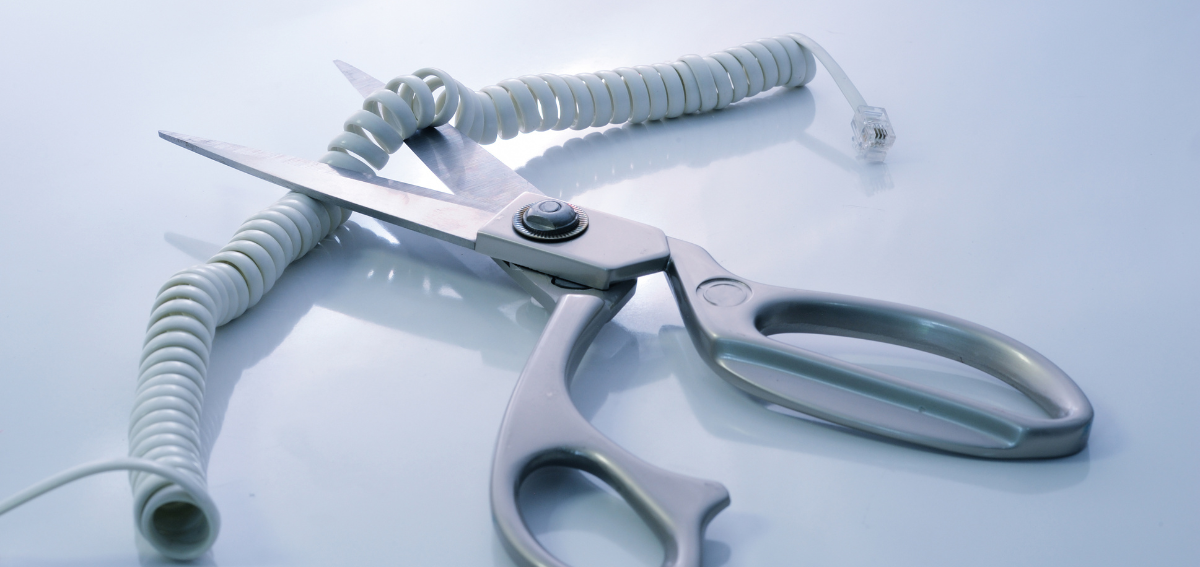In 2019, under order number 19-72A1, the FCC lifted its oversight of the Public Switched Telephone Network (PSTN). As of August 2022, it no longer requires carriers to continue Plain Old Telephone Service (POTS).
As a result, carriers have been pushing through unprecedented price increases, sometimes as much as 600%, while reducing support and disconnecting lines as they prepare for the technology to sunset.
Today, approximately 30 Million POTS lines are under contract with Local Exchange Carriers/Competitive Local Exchange Carriers (LECs/CLECs). While the FCC continues to push the end-of-life timeline annually, LECs/CLECs believe we are three years out.
Many businesses are unprepared to change their technology and lack the necessary staffing. Organizations with dozens, hundreds, or thousands of locations need help. They’re between a rock and a hard place, with massive budget hits from rising POTs pricing and the inability to make the move necessary to migrate to a new technology.
With costs adjusting sharply upward, the clock ticking, and the need to fund and manage a technology change, Technology Advisors and MSPs need a plan they can implement over time that pays for itself. The good news is that there is a POTS-to-UCaaS Solution that you can utilize to reduce costs immediately, prepare the business for a smooth transition to new technology, and improve operational efficiencies.
Step 1 – Create a Centralized Inventory
A centralized inventory identifies all the Client’s POTS lines and their respective locations, creating actionable data uploaded to a secure web portal for visibility and enabling invoice consolidation and payment.
The Client immediately frees up resources previously needed to process invoices and payments and gains visibility without changing carriers and while using existing equipment.
Step 2 – Move to a Centralized Help Desk
One of the benefits of creating a Centralized Inventory is that it enables the Client to step up to a Centralized Help Desk. So, instead of contacting individual LECs/CLECs for troubleshooting and repairs, the Client has one dedicated number to call 24/7/365 for support and a ticketing system available through the secure web portal.
Step 3 – Cost Optimization Through Carrier and Service Consolidation
With the data obtained through creating a Centralized Inventory, you can lower your Client’s costs and lessen the POTS pricing squeeze by consolidating all their lines to one or more carriers. In most cases, the customer will remain on the LEC service with no cutover, get reduced cost, single point-of-service across all LECs, and still have repairs provided by the LECs. Work with a Business Solutions provider that offers aggressive pricing and provides side-by-side cost comparisons that you can share with the Client. You can also show additional savings by extending consolidation efforts to Managed Services, Network Services, and Wireless.
Step 4 – Reinvest Savings Into New Technology
Having deepened your relationship with your Client by demonstrating early ROI, you can help them reinvest their savings. With inventory and optimization in place, technology migration is more manageable, and the Client is more receptive to different technology recommendations based on line type. For example, various solutions exist for Voice, Fire, Life, and Safety lines based on their specific needs. An All-In-One POTS Alternative allows Clients to keep their existing equipment for business-critical applications such as fire alarms, elevators, emergency phones, faxes, and more while eliminating costly POTS lines.
With all Voice lines identified and inventoried, the move to a UCaaS provider that meets the particular needs of the Client makes the migration process much less daunting. Project managing the UCaaS migration and solutions solidifies the Trusted Advisor relationship that most Technology Advisors/MSPs value long-term.
Conclusion
With this path, the benefits include actionable data, a secure web portal for visibility, one invoice and one bill to pay, unburdening Accounts Payable, a Centralized Help Desk and ticketing system for all services, plus the cost savings to pay for new technology. As a Trusted Advisor or MSP, you have not just “saved a few dollars a month”; you have helped to fund the transformation you proposed while effecting genuine operational savings and corporate efficiencies across multiple departments, bringing value to various levels of the C-suite. You have cemented the relationship, paved the way for technology transformation, and dramatically improved business operations. Win-Win!

